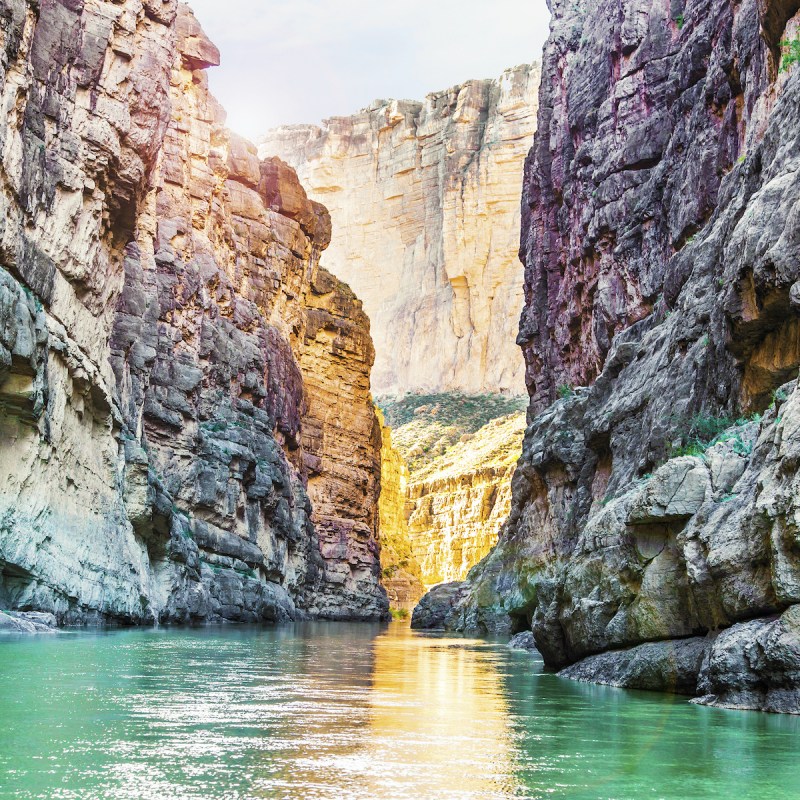
Big Bend National Park — located in southwest Texas — includes a large section of the Chihuahuan Desert as well as the entire Chisos mountain range. The park, which gets its name from a large bend in the bordering Rio Grande River, is believed to be home to more types of wildlife than any other national park in the United States.
Videos by TravelAwaits
“Once a remote and seemingly inhospitable area reached only by miles of dirt roads, Big Bend has become one of the most popular vacation destinations in the state of Texas, visited by more than 450,000 visitors each year,” says the National Park Service. “Scenic vistas, diverse wildlife, outdoor adventure, historic sites, dark skies, and border culture rank among the features visitors enjoy in Big Bend.”
To make it easier for you to plan a trip to the park, the National Park Service has released its “Top Ten Tips for Visiting Big Bend,” written by the rangers who work there.
“We look forward to sharing this special place with you,” the rangers explain. “Use these tips to plan like a park ranger and ensure your trip to Big Bend is safe and enjoyable.”
1. Be Mindful Of Seasons
The best time to visit Big Bend is from late fall to early spring because the winter months bring “beautiful days and pleasant temperatures,” the rangers explain. The flip side of the coin is that “summer months are scorching, and outdoor recreation can be uncomfortable and unsafe,” they continue.
It makes sense then, that in the winter, five visitor centers are open, ranger programs occur frequently, and local outfitters offer more activities. In the summer, many of these operations are reduced.
More information about operating hours and seasonality can be found here.
2. Book Camping And Lodging In Advance
“Big Bend is busy!” rangers note. That makes it important to know where you’ll sleep in advance.
Rangers point out that to stay overnight in the park, visitors must either have a room at the Chisos Mountains Lodge, a reservation at a campground, or a permit for a primitive backcountry campsite. The rangers also explain that campgrounds, some of the primitive backcountry sites, and rooms at the lodge are often filled up to 6 months in advance.
You can learn more about determining where you can spend the night here and make reservations here.
Keep in mind that there also are many options for camping and lodging just outside the park. You can learn about them here.
3. Know Your Vehicle
Most of Big Bend’s main highlights can be enjoyed from two-wheel-drive cars on paved roads.
If you are more adventurous, Big Bend also features miles of challenging roads. It must be pointed out, however, that these roads typically require four-wheel-drive — not all-wheel-drive — vehicles with at least 10 inches of clearance.
If you plan to drive in the park’s backcountry, it is critical for your vehicle to be properly equipped. After all, the National Park Service frankly warns, “A disabled vehicle on Big Bend’s isolated roads can be a life-threatening situation.”
You can learn more about driving on the park’s backcountry roads, including guidelines for vehicles, here.
4. Bring Plenty Of Water
Rangers strongly encourage visitors to bring more water than they think they will need. In fact, the minimum recommendation is to allocate one gallon of water per person, per day.
Here’s why. Fluid/electrolyte loss can exceed two quarts per hour if you hike uphill in direct sunlight during the hottest time of the day, rangers explain. What’s more, it’s easy to become dehydrated — even on comfortable winter days — because the air is warm and dry. To stay safe, rangers recommend eating and drinking enough water to replace the calories and fluid your body uses.
5. Take A River Trip
The Rio Grande River is the park’s southern boundary for 118 miles. Taking a float trip on the river is a great way to explore Big Bend, the rangers write.
Pro Tip: You will need to take your own gear because the park doesn’t rent equipment. Don’t worry if you don’t have river gear — there are numerous river outfitters in the nearby towns of Study Butte and Terlingua.
You can learn more about floating the Rio Grande here.
6. Beat The Heat!
Big Bend is a desert park. As you may expect, summer temperatures in the park can reach 100 degrees by late morning — and remain dangerously high until after sunset.
If you plan to visit Big Bend in the summer, rangers advise hiking early in the day and being off the trails before noon.
Pro Tip: Summer afternoons are an excellent time to enjoy the park’s scenic drives and visit the Fossil Discovery Exhibit and visitor centers.
7. Don’t Rely On Phone Service
“Phone and data service is spotty throughout the park, and GPS systems don’t always handle the area well,” rangers explain. “Don’t rely on your cell phone! You’ll also need to have a park map on-hand.”
8. Reconsider Taking Pets
If you plan to visit Big Bend, your pets may need a different plan, the rangers note. Although leashed pets can walk on paved and dirt roads, and in campgrounds, they are not allowed on hiking trails, off-road, or on the river in Big Bend.
What’s more, it’s too hot most of the year to safely leave pets in the car. If you plan to hike or take a river trip, either someone must stay behind with your pet or you will need to make arrangements with a kennel service, rangers explain.
You can learn more about pet regulations at Big Bend here.
9. Stay Informed
Rangers encourage everyone to check current conditions on the park’s website before visiting Big Bend because there may be important weather, safety, or fire information to consider — including high heat warnings. You can even check the current conditions for air quality data such as ozone level, solar radiation, visibility, and temperature.
You can monitor current conditions and check for alerts here. Live weather reports and air quality data may be found here.
10. Know That Group Size Is Limited
Currently, the group size limit in Big Bend is 12 people or a single household due to COVID-19 restrictions. Importantly, that includes commercial tours and tour buses.
You can learn more about COVID-19 updates that apply at Big Bend here.
If you’re planning a trip, be sure to read all of our Big Bend coverage. And since you’ll be in Texas, be sure to check out all of our Texas coverage as well.
